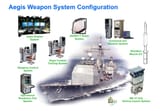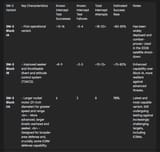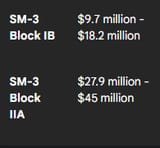>>64071531
An ASAT needs to be launched at a target on a known predictable trajectory, then tolerate space conditions for a few minutes, and finally do a little bit of terminal guidance and course correction until it impacts the target. It doesn't need any external data link, and it doesn't need to generate power.
A brilliant pebbles style interceptor needs to be a fully self sufficient satellite with an endurance of years, attached to an orbit-to-surface rocket with huge amounts of DV to intercept a target quickly that also has all of the sensor and terminal guidance capability that the ASAT missile has. The satellite itself isn't likely to be that much cheaper than something like a Starlink satellite, and those are already over 1 million bucks a piece for semi-disposable civilian tech. Given that an SM-3 is very roughly 10 million USD and you will need roughly similar capabilities for a boost phase interceptor (plus space hardening), you are like looking at 20 million USD or more for a complete brilliant pebbles interceptor satellite. This isn't even considering the cost to get the things into orbit (which, to be fair, is relatively cheap now).
Given that you can easily require hundreds if not thousands of brilliant pebbles per ICBM just so that you will have one interceptor in position per ICBM, and the enemy only needs to destroy that one interceptor to punch a hole in your ballistic shield, the economics are incredibly against boost phase interception to a degree that makes it even more impractical than post-boost phase interception.
As for the economics, that cuts both ways. Every boost phase interceptor is one less useful weapon. What matters the most is whether it costs the enemy more than it costs you, and nuclear ballistic missile defense is incredibly in favor of the attacker.











